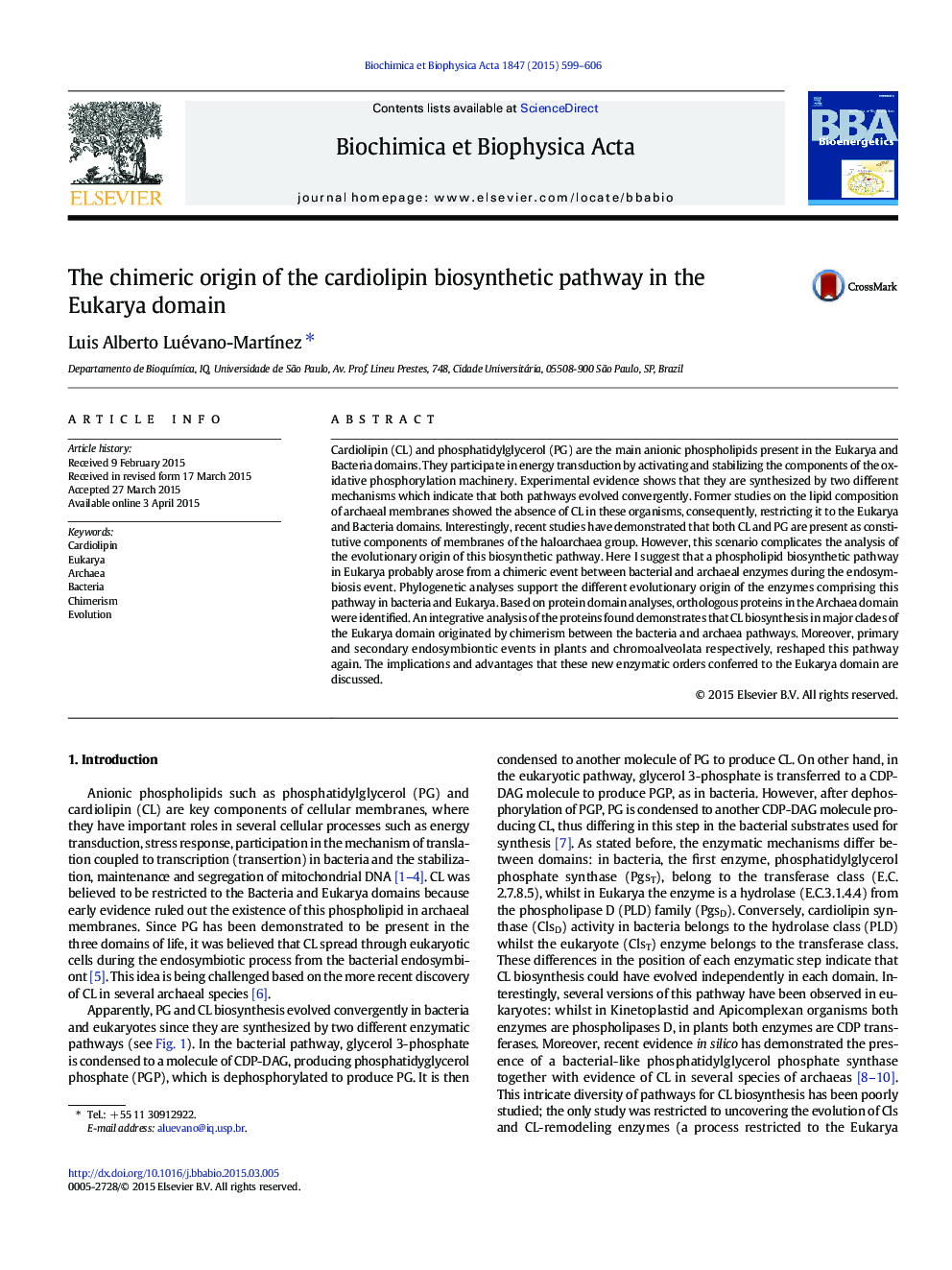| Article ID | Journal | Published Year | Pages | File Type |
|---|---|---|---|---|
| 8298725 | Biochimica et Biophysica Acta (BBA) - Bioenergetics | 2015 | 8 Pages |
Abstract
Cardiolipin (CL) and phosphatidylglycerol (PG) are the main anionic phospholipids present in the Eukarya and Bacteria domains. They participate in energy transduction by activating and stabilizing the components of the oxidative phosphorylation machinery. Experimental evidence shows that they are synthesized by two different mechanisms which indicate that both pathways evolved convergently. Former studies on the lipid composition of archaeal membranes showed the absence of CL in these organisms, consequently, restricting it to the Eukarya and Bacteria domains. Interestingly, recent studies have demonstrated that both CL and PG are present as constitutive components of membranes of the haloarchaea group. However, this scenario complicates the analysis of the evolutionary origin of this biosynthetic pathway. Here I suggest that a phospholipid biosynthetic pathway in Eukarya probably arose from a chimeric event between bacterial and archaeal enzymes during the endosymbiosis event. Phylogenetic analyses support the different evolutionary origin of the enzymes comprising this pathway in bacteria and Eukarya. Based on protein domain analyses, orthologous proteins in the Archaea domain were identified. An integrative analysis of the proteins found demonstrates that CL biosynthesis in major clades of the Eukarya domain originated by chimerism between the bacteria and archaea pathways. Moreover, primary and secondary endosymbiontic events in plants and chromoalveolata respectively, reshaped this pathway again. The implications and advantages that these new enzymatic orders conferred to the Eukarya domain are discussed.
Related Topics
Life Sciences
Agricultural and Biological Sciences
Plant Science
Authors
Luis Alberto Luévano-MartÃnez,
